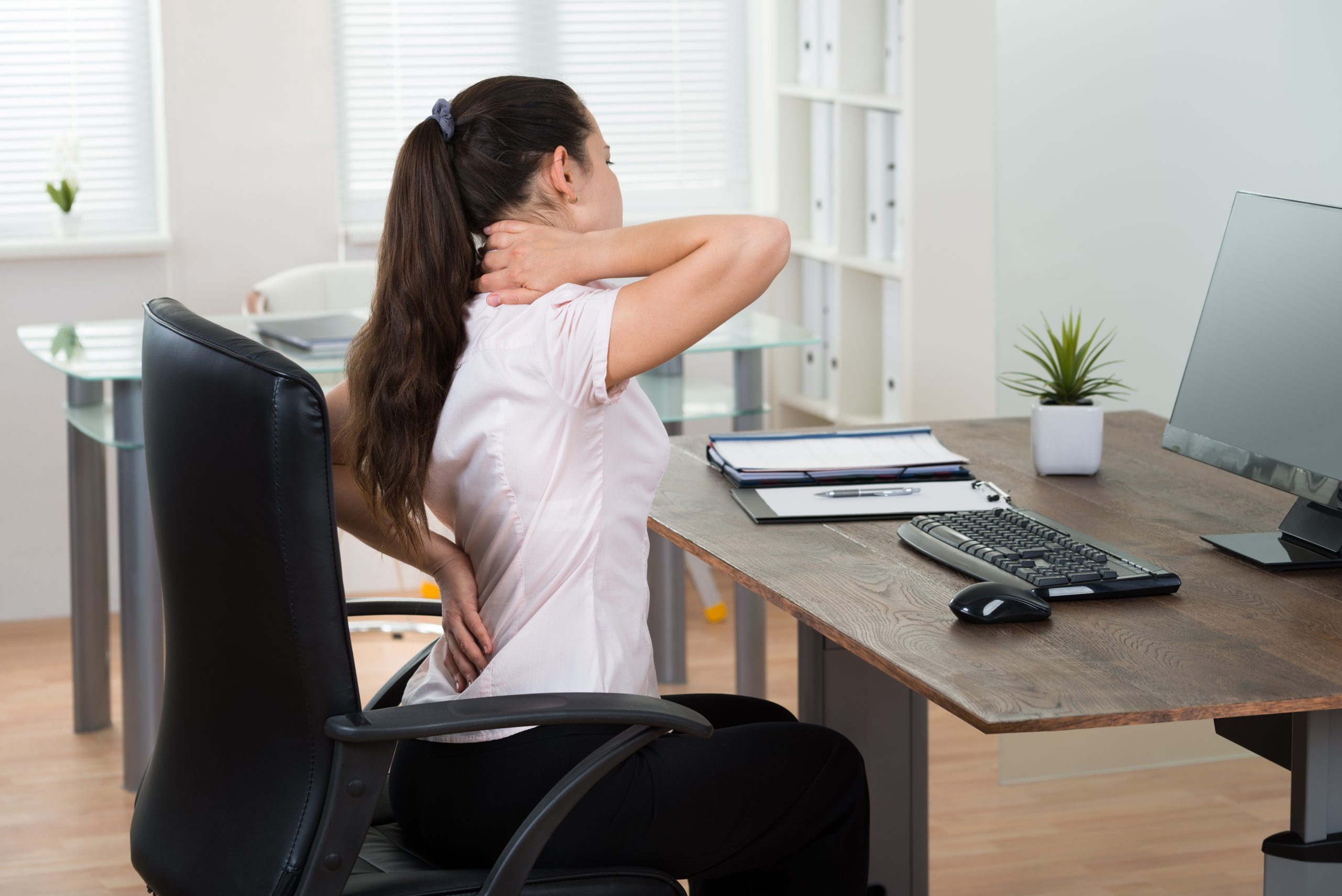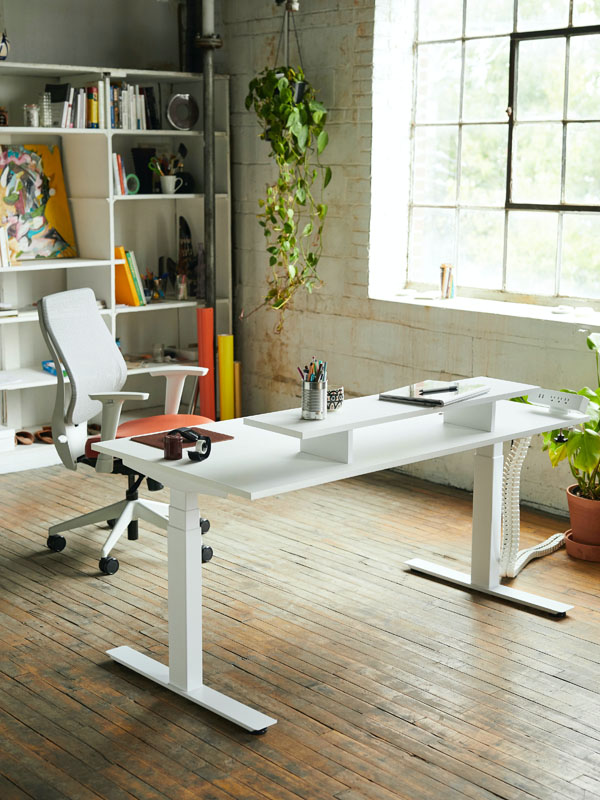
- Feb 23, 2017 |
- Ergonomics Blog, Posture, Repetitive Strain Injury, Sit to Stand Options
Is Your Chair Hurting You?
Is your chair hurting you? Millions of people sit on their butt all day and complain of back pain and numb butts. Are you one of these people? If your chair is hurting you, it might not be your chair’s design that is the problem. It is more likely how you are using it that is the issue.
A recent blog talked about sit/stand desks and whether they were beneficial. An even more recent one discussed Fit Balls and whether they should replace your chair. The most important piece of furniture you have in your office is your chair. No matter if you have a sit/stand desk or not, nearly all people will spend the majority of their day sitting in their chair. Thus it is important that it fit you well!
What Does Your Chair Offer You?
Chair manufacturers are like car makers. There are the cheap chairs with very few features, and the expensive ones, with lots of perks. So are you sitting in the Maserati or the Chevette? It might not matter, if you don’t adjust it. The chair in the picture below is one of the better ones on the market, however, I frequently see people using it (and other great chairs) with a slouched posture and complaining of back pain. Even an expensive chair can feel like “crap” if it isn’t adjusted properly. If you are sitting at a poor workstation, a kitchen table or a desk that is too high, you will likely be pulled forward out of your chair into a slouched position (like the picture below).
What to Look for in an Ergonomic Chair and How to Adjust it
An ergonomic chair provides proper support and can be adjusted to suit the individual using it. Many adjustable features makes it easier to fit more people, including seat pan height, depth, and tilt, backrest height, armrest height and width.
Seated people need support for their upper back, lower back (lumbar region), legs, feet, and arms. You can get this support from five parts of your chair:
- The backrest
- The Lumbar Support (Backrest)
- The Seat Pan
- The Floor or Footrest, and
- The Armrests
ADJUSTABILITY!!! That is key to making it fit you. Look down on the right hand side of your chair, below your seat pan. See all those paddles? Hope so! Most chairs have the paddles there and they are your adjustment “helpers” to ensure you can make the chair fit you. It is best to set up your chair independent of your desk.
|
|
|
|
|
|
|
|
|
Once your chair is set up properly, your body weight should naturally rest at the back of the chair so that you feel comfortable sitting back in it with your feet flat. Now wheel yourself into your desk and check that you can still sit like you did when you were adjusting your chair. if you can’t you will need to adjust your workstation. If you have set up your chair properly and it still doesn’t feel comfortable, you might need a different sized chair. If that is not possible, there are definitely smaller / cheaper things you can do to make the chair fit you better, like adding on an external lumbar support, switching out the armrests, tilting the seat pan forward, etc.
Now that you have figured out how to sit better, figure out how to MOVE AT LEAST ONCE PER HOUR!!!





